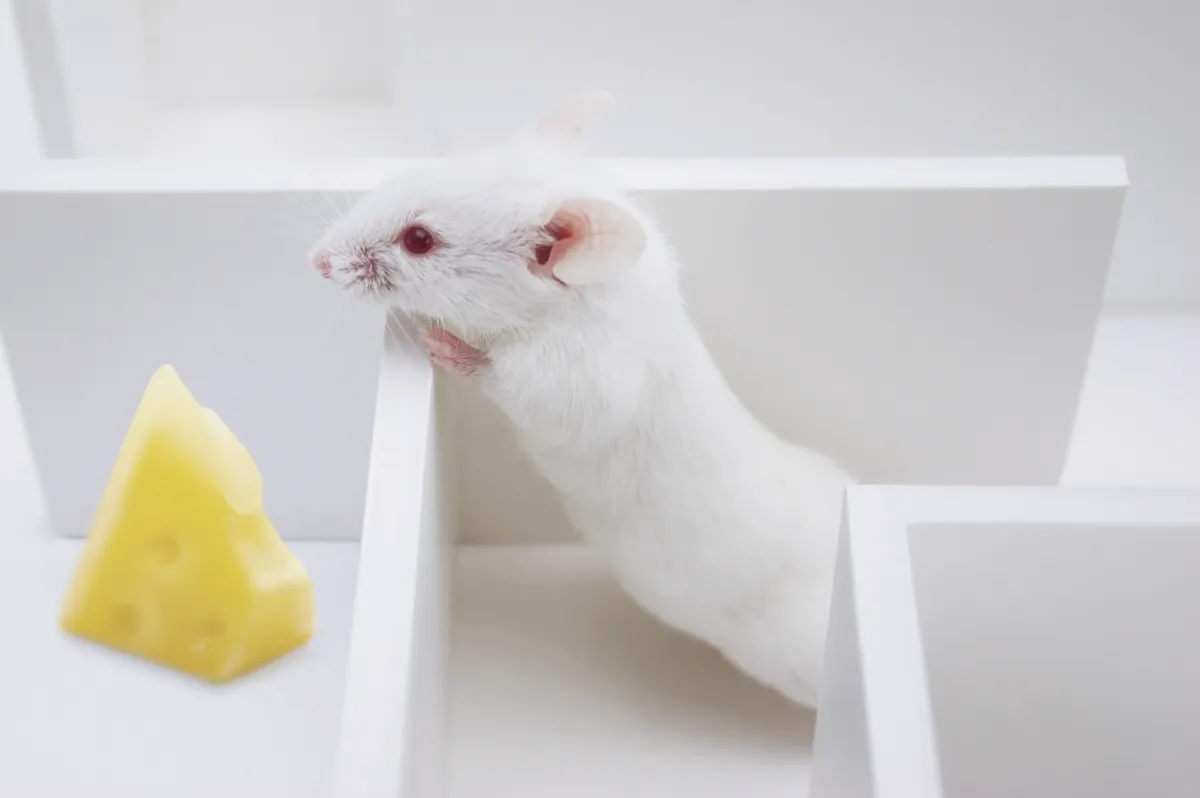Studies in mice have shown that the brain is able to register surprising events differently to those that are expected, so that we can learn from them and take action next time something unexpected happens.
The brain responds to surprise by releasing a compound called noradrenaline, which is a chemical that is also involved in the fight-or-flight response. Noradrenaline is known to increase alertness and arousal in the body, while also triggering the release of energy, quickening the heartbeat and increasing blood pressure. However, too much noradrenaline in humans can lead to anxiety problems.
Neuroscientists already knew that an unexpected event releases noradrenaline in the brain, but this new study is the first to link the compound to learning and change in behaviours.
To show the relationship, the team at Massachusetts Institute of Technology had to first train mice to expect a certain scenario. The mice were played two sounds and taught to push a lever depending on what they heard; a high-frequency tone signalled that they should push the lever to get a reward, and a low-frequency tone that meant pushing the lever would lead to a punishment: an unpleasant puff of air.
Once the rules of the trial were established, the researchers then began giving the mice surprise responses, where pushing the lever after a high-frequency sound would result in punishment, not reward. These surprises corresponded to higher amounts of noradrenaline being released and circulated around the brain, which the team said acted as a signal for learning.
As the trials continued, a mouse that had experienced a surprise punishment then became much more hesitant to push the lever in response to a high-frequency sound. It seemed as though the animal was adjusting its learned behaviour in response to the new information that false alarms were possible, said Prof Mriganka Sur, senior author on the study.
"We show that surprise – like a punishment when a reward was expected – is really a signal for learning," said Sur.
Read more about the brain:
- Be more productive: A neuroscientist explains how to get more done in less time
- Your gut microbiome could be telling your brain when you are hungry
The mice were also treated on occasion to an unexpected reward. This positive result after a previously false alarm caused the release of a large burst of noradrenaline, which was then sent around the brain and detected in regions that control planning and higher cognitive functions. It seemed as though the mice learned from this surprise, as in following trials the mice were more likely to pull false alarms, hoping for a random reward.
When the team ran the same test but restricted the release of noradrenaline, the mice were less likely to take a chance on a false alarm, showing the link between the compound and the learning that followed its release.
In humans, noradrenaline makes us more alert and allows us to concentrate on a task. But understanding when and why noradrenaline is released can help us rectify the problems that come from too little or too much of the compound.
"Too little noradrenaline is associated with drowsiness, inattention and depression, while too much is associated with hyperarousal and anxiety," said Sur. "Most attention-demanding tasks require an optimal level of noradrenaline. For example, when driving, we are constantly interacting with the car and the world. Most of these actions are rewarding but expected – the car does what we want it to do – and small amounts of noradrenaline are released to prime the brain.
"Unexpected events, such as a pedestrian jumping in front of the car, or another car running a red light and appearing suddenly in front, are unexpected and cause additional noradrenaline release. This sharpens our attention for some time, and we learn and remember things better. If the event was very hair-raising, we may have a large amount of noradrenaline release, and be anxious and fearful for a while."

These events are part of normal life, but too many of them can lead to long-term fear and anxiety issues.
"Adverse childhood events are thought to alter the brain’s regulation of noradrenaline and cause dysfunction later in life," said Sur. "PTSD is thought to be the memory of even a single highly adverse unexpected event, like a roadside bomb, created by a surge of noradrenaline, that is then later triggered by a benign stimulus, for example a loud car exhaust."
There are trials ongoing for treatments for PTSD and anxiety disorders that seek to reduce the amount of noradrenaline in the brain. Potential drugs include those currently used to treat high blood pressure, as these work by lowering levels of noradrenaline among other things. Beta blockers, which are usually prescribed to people with heart problems, have also been shown to interrupt interactions between noradrenaline and the brain.
And, because low levels of noradrenaline are associated with depression, Sur said boosting amounts of noradrenaline is being considered for treating the condition.
